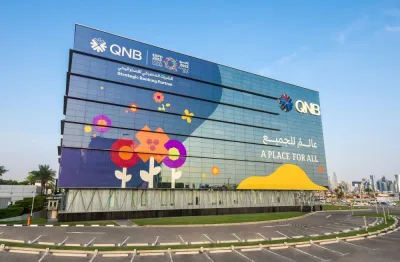The US Federal Reserve (Fed) now sees having to raise its policy rate by a total of three times in 2018, three times in 2019 and twice in 2020, QNB has said in an economic commentary.
On March 21, in a widely anticipated move, the Federal Reserve Open Market Committee raised its policy interest rate by another 25 bps to a target range of 1.5%-1.75%. This, QNB noted, comes on the back of three 25-bps rate hikes delivered in 2017.
Accompanying the interest rate decision, the Fed published its latest summary of economic projections for the US economy. The revisions since the previous publication in December last year were generally upbeat with the economy expected to overshoot its long-run equilibrium values for inflation, unemployment and interest rates, the report said.
“An important driver of these upward revisions has been the recent passage of President Trump’s tax and spending bills through Congress which are expected to boost economic activity in the short term,” QNB said.
The level of GDP is now expected to be a cumulative 0.5% higher over 2018-20 than at the time of the December projection, although the long-run potential growth rate was kept unchanged at 1.8%.
The unemployment rate is projected to decline to 3.6% in 2019 and 2020, well below the long-run full employment equilibrium of 4.5%, suggesting that economy is expected to be running “hot” in 2019-20 and implying that tighter monetary policy is required. Consistent with the unemployment projection, inflation is expected to overshoot the long run inflation objective of 2% in 2019 and 2020, QNB said.
In line with the upbeat revisions to the macro outlook, the Fed’s median projection added one more policy rate hike in each of 2019 and 2020, which would take the policy rate to a median 3.4% by end-2020. This implies that the Fed now sees having to raise its policy rate by a total of three times in 2018, three times in 2019 and twice in 2020, it said.
However, QNB noted, the market’s response to the upward revisions to the Fed’s economic projections was generally muted. The Fed Fund’s futures curve, which takes a view on the future path of the Fed policy rate, edged only marginally higher on the news, but remains significantly below the path anticipated by the Fed in 2019-20.
While the futures curve tracks the Fed’s 2018 interest rate projection quite closely pricing in almost three rate hikes, the market expects only 42 bps of hikes in 2019 compared to the Fed’s projection of 75 bps. In 2020, the market expects less than 10 bps of policy tightening versus the Fed’s median projection of two 25 bps hikes.
Clearly, there is a significant disconnect between the market’s view and the Fed. The fact that markets are betting on a lower path for the Fed Fund’s rate over the next few years suggests that investors are somewhat downbeat compared to the Fed about the medium to long term growth prospects of the US economy.
The future evolution of the policy rate will ultimately depend on the path the economy takes relative to the Fed’s current expectation. Indeed, this was highlighted by Fed chairman Powell in comments he made at the press conference following the interest rate decision.
“Should the economic expansion prove weaker than anticipated then it is likely that the policy rate will rise by less than is currently projected by the Fed and more in line with the market’s view,” QNB said.

An eagle tops the Fed building’s facade in Washington (file). US GDP level is now expected to be a cumulative 0.5% higher over 2018-20 than at the time of the December projection, although the long-run potential growth rate was kept unchanged at 1.8%.


